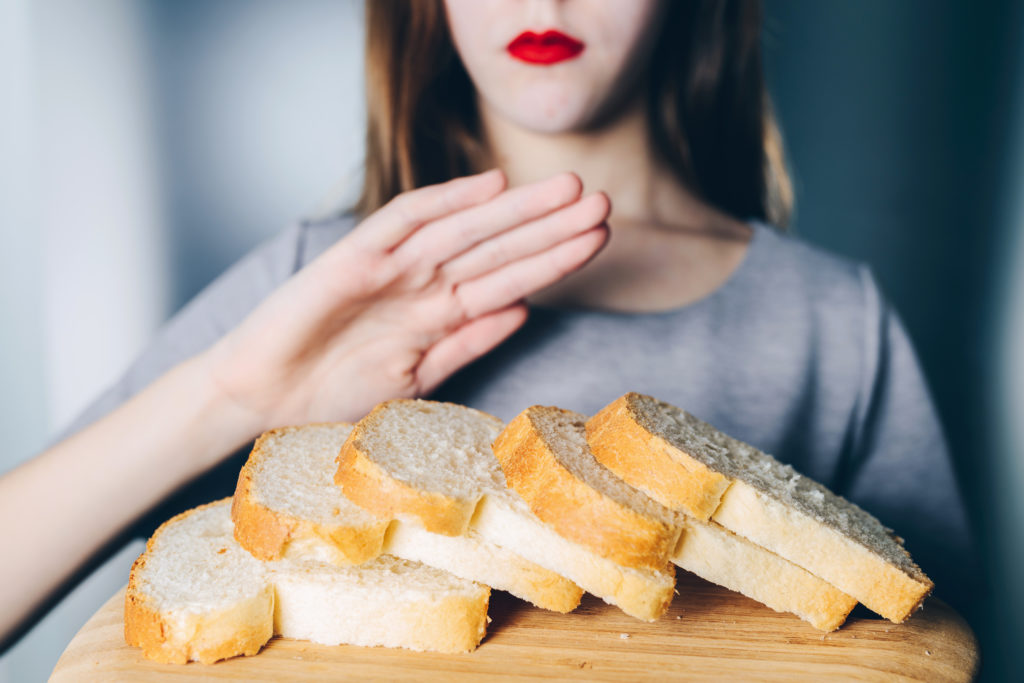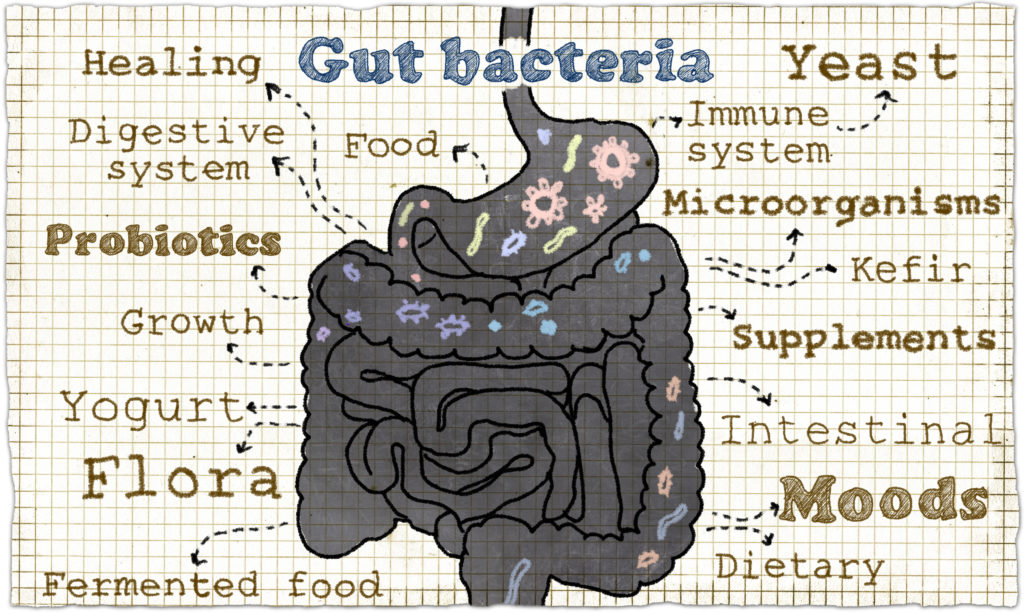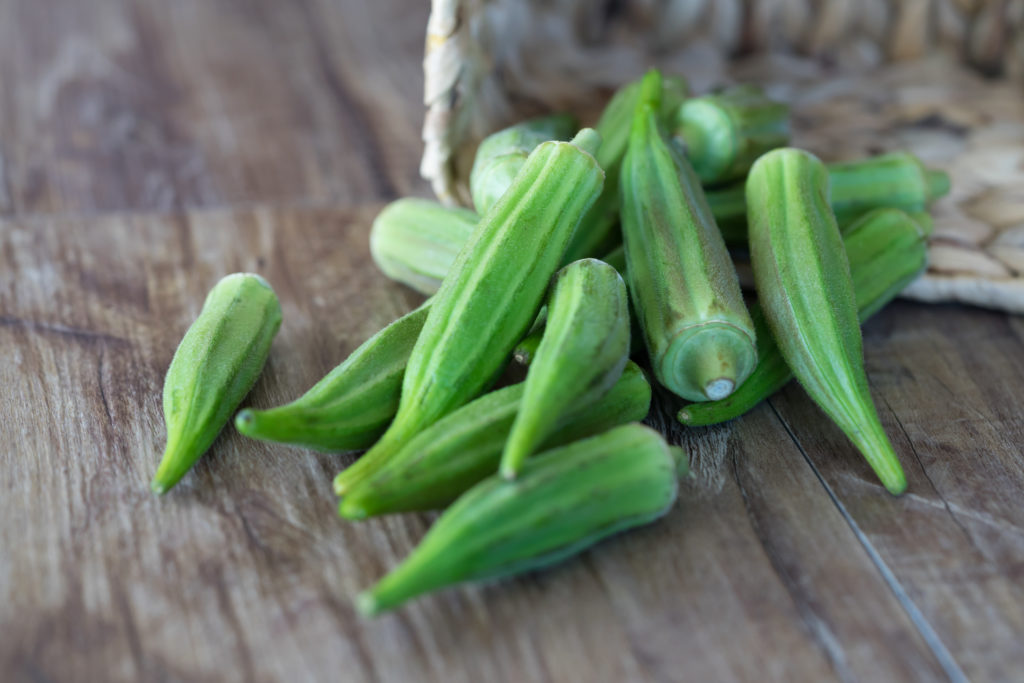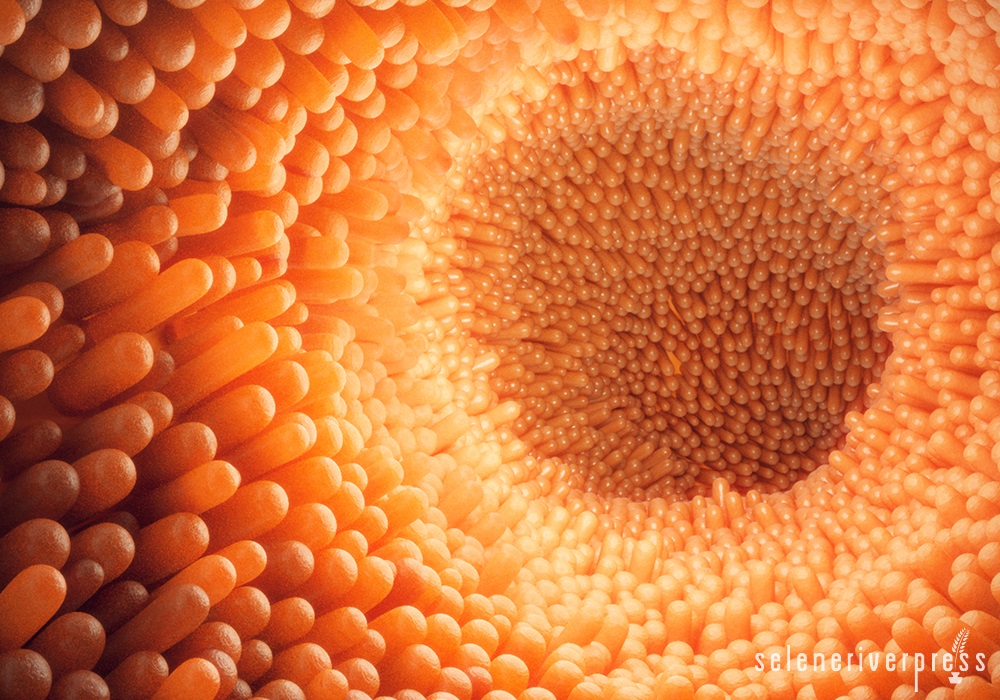Looking at the vast number of articles, podcasts, and blog posts out there about gluten, it seems that our flight from this substance is becoming more and more of the “in” thing. I wonder if this trend is just a temporary craze or if there’s something more to be understood here.
Unfortunately, not enough of us are eating wheat products made from heritage and landrace grains. Instead, the American diet is full of hybridized wheat products that contain a great deal more gluten than heritage wheat and lots of other grain products that have been stripped of their nutrients and artificially fortified with various chemical substances.
But the problem isn’t just with what we eat, it’s with what we don’t digest. Without strong digestive action from the saliva and stomach, liver, gallbladder, and pancreatic enzymes, the villi in the small intestine become highly compromised and food is not properly digested. That, dear reader, is the primary reason for this blog post.
Store-bought breads, bakery goods, tortillas, and even homemade breads made with white commercial flour should be avoided at all cost—and not just because they are void of nutrients and high in gluten. They also contain carcinogenic additives like potassium bromate. Luke Yoquinto explains the dangers of this substance in “The Truth About Potassium Bromate” (LiveScience.com): “Potassium bromate is also illegal in the European Union, Canada, Brazil and elsewhere because it causes cancer in rats and mice. In the United States, however, it has remained legal since it was first patented for use in baking bread, in 1914.”
As I contemplate this trend, I continue to scratch my head. Most people I know who have eliminated foods made with wheat—both commercial wheat products and the type of heritage whole grain sourdough breads advocated by the Weston A. Price Foundation—have not been tested for celiac disease. Celiac is an autoimmune disease, not a simple digestive problem. It is a truly valid reason to go gluten free, as I explain in my article “To Gluten or Not to Gluten”:
“Possibly the only true candidate for a totally gluten-free diet is a person who has damage to the tiny, fingerlike protrusions lining the small intestine called villi. Villi allow nutrients from food to be absorbed into the bloodstream. When damaged, the body cannot absorb nutrients properly, leading to malnutrition—regardless of the quantity or quality of food eaten. This is celiac disease and those suffering from it must abstain from gluten in all forms. Unfortunately, celiac disease can be misdiagnosed as irritable bowel syndrome, Crohn’s disease, diverticulitis, intestinal infections, iron deficiency, anemia and even chronic fatigue syndrome. It is estimated that about one percent of the U.S. population has celiac disease”
What Else Has Gluten?
Some people who go gluten-free may only give up baked goods like breads, cookies, and other easily recognized wheat-based foods. But they fail to understand that there is plenty of gluten in other foods. A completely gluten-free diet is so challenging because gluten is present in many processed foods—not just foods that list wheat, barley, or rye as the main ingredient.
For example, gluten can be found in:
- Frozen vegetables
- Sauces, including soy sauce
- Many foods made with “natural” flavorings
- Vitamin and mineral supplements
- Some medications
- Even toothpaste
This is one more in a long list of reasons to stay away from most processed foods and focus instead on those you prepare yourself!
The director of clinical research at the Celiac Center at Beth Israel Deaconess Medical Center in Boston, Dr. Leffler, explains that a true gluten-free diet is time-consuming, expensive, and restrictive: “It’s a gigantic burden for those who have to follow it…Many people with celiac disease are understandably frustrated when they hear in the lay press how wonderful this diet is.”
So, dear reader, when someone has a sincere interest in looking beyond giving up wheat products to improve their gut health, I’m always happy to oblige. Taking this drastic step means eliminating a super food, heritage grains, from your diet, along with all of their vitamins, minerals, and other nutrients that aren’t available in many other foods.
Further down in this blog post, I’ll let you know where you can find a great set of starter heritage grain recipes. I’ll also let you know where you can purchase pristine organic grains and a phenomenal whole food supplement that will slowly cleanse the villi. This is essential because if your villi is compromised, you cannot digest gluten and other proteins.
7 Villi Detox Steps Advocated by Sally Fallon Morrell
- Get off all improperly prepared grains and then slowly reintroduce heritage grains and properly prepared organic whole wheat.
- You need lots of bone broth as the villi rest on a layer of collagen that must be supported. And bone broth has numerous other benefits as well.
- Learn to make and regularly consume fermented foods and beverages.

- Include cod liver oil, high-vitamin butter, and other good fats in your diet.
- Avoid all improperly prepared grains, such as granolas, muesli, and extruded breakfast cereals.
- Work with a WAPF practitioner to help guide you.
- To assist the gut, Dr. Thomas Cowan recommends the use of Standard Process Okra Pepsin E3, which is gluten-free, along with a nourishing traditional diet. Dr. Cowan himself uses Okra Pepsin E3 and considers it an important addition to Sally’s food recommendations—with good reason (see below)
The Action of Okra Pepsin E3
When undigested protein forms a mucus, the villi becomes trapped and cannot function properly. The okra in Okra Pepsin E3 contains a sticky material called mucilage that contacts the intestinal walls just long enough for the pepsin enzyme to contact and digest the protein in the mucus. This disorganizes the mucus and it sloughs off, freeing the villi.
Once the villi are exposed and the mucus is dissolved with the Okra Pepsin E3. I recommend that you continue taking the Okra Pepsin E3 but in a reduced amount. The next step in the process is to heal the villi by adding the following to your protocol: Standard Process Chlorophyll Complex, Cataplex C, and Cataplex ACP, or Cyruta Plus. Personal Note: See a chiropractor who sells and uses Standard Process for a more exacting protocol and exact dosage for your individual needs going forward.
Continued use of digestive enzymes and support for healthy digestion is highly recommended as prevention.
This protocol has been successful with gluten-intolerant subjects, and it may also be successful for those diagnosed with true Celiac disease.
If you decide to follow this protocol, your holistic practitioner should test you for the correct dosage of Okra Pepsin E3 before you begin. When I was first tested, I needed to take five capsules over eight to ten hours, but it will vary depending on your toxicity level. Also, you may need to take it for several months and stay in touch with a long-term practitioner, such as a chiropractor, who uses kinesiology to test for any change in dosage. At some point in time, you will test for readiness to start the Chlorophyll and Cataplex C.
I for one plan to take the combo for the rest of my life. It’s that powerful!
I recently read a very interesting book, One Answer to Cancer, by the late Dr. William Donald Kelley. It’s now out of print, but you can read the entire book here. Dr. Kelley leaves absolutely no doubt that Okra Pepsin E3 is a must in order to dissolve the heavy mucus on the villi and in the small intestine.
Yes, we all develop some of this thick mucus. Read the excerpt below and ask yourself: Is it any wonder why, for some of us, the villi cannot properly digest gluten?
Excerpt from One Answer to Cancer, by Dr. William Donald Kelley
If there were only one kind of pill that would help everybody, the cancer patient or otherwise, it would be Okra-Pepsin-E3 made by Standard Process, Inc. It would probably do the nation’s health more good than any other one pill. It digests the mucus that coats the walls of many people’s small intestine. Certain foods, such as pasteurized milk and many cooked foods, cause the mucus buildup on the wall of the small intestine (raw foods do not cause this mucus buildup).
The mucus coats the villi on the wall of the small intestine. The villi are like tiny fingers that stick out from the intestinal wall to absorb nutrients from the digested food, which is primarily liquid. The mucus on the villi blocks the absorption of nutrients from the food. Sometimes the mucus gets so thick and tough it is almost like a plastic film. Almost no nutrition can get through to the body.
A person with a severe mucus buildup could take $1,000 worth of supplements a month along with a good diet and still get almost no nutritional value from them. He or she would be starving and therefore would want to eat more food, including protein. That would lead to more of the pancreatic enzymes being used to digest the protein even though it could not be properly absorbed. When all the pancreatic enzymes are used up, there are none left in the blood to destroy cancer cells.
New Hope—and a New Diet
Hopefully, you are now convinced and ready to start anew. If you are resolved to no longer eliminate an entire food group and instead get the most out of what all food groups have to offer, I would like to introduce you to wonderful heritage grains that are the best for this transition.
Best Heritage Grain Choices for the Villi Detox
Personal note: Please be sure to check with your medical doctor should you have any other medical conditions or feel in any way uncomfortable with the protocol.
That being said, you should not ingest too many high-gluten grains at first. I therefore recommend that you start by using einkorn and spelt, the two lowest-gluten grains (both can be purchased at Organics by Lee). To learn more about nutrient dense ancient heritage grains and find some recipes, read my blog post “Ancient Grain Primer.”
Fried Okra
—Used with permission from Sally Fallon Morrell. This is a fun okra recipe from Sally’s new book, Nourishing Diets. Sally says that okra is a common vegetable in Africa, Asia, and the American South. The mucilaginous interior of the pods contains soluble fiber, considered helpful for feeding children and mitigating malnutrition. The pods can be eaten raw but are typically fried.
Note: All ingredients are presumed organic and full fat.
Ingredients
About 1½ lbs. fresh okra
1 cup buttermilk or plain whole-milk yogurt
About 1 cup unbleached all-purpose flour
1 teaspoon paprika
1 teaspoon sea salt
1 teaspoon freshly ground black pepper
About 2 cups lard or rendered bacon fat, for frying
Instructions
- Trim the ends off the okra and cut the pods crosswise into rounds. Put them in a bowl, add the buttermilk, and soak for a few minutes. Place in colander to drain.
- In a shallow bowl, combine the flour paprika, salt, black pepper and cayenne. Dredge the okra pieces in the seasoned flour.
- In a heavy bottomed deep skillet set over medium high heat, melt the lard or bacon grease and bring to 350°F. Working in small batches, add the dredged okra slices and fry 2–3 minutes, or until well browned. Use a slotted spoon to transfer the okra to paper towels to drain. Serve hot.
Some Nutritional Facts on Okra
Okra is a “powerhouse of valuable nutrients,” according to the University of Illinois Extension program. It contains no fat or cholesterol, rich amounts of soluble fiber, which promotes healthy cholesterol levels, and insoluble fiber, which promotes a healthy digestive tract, lowering your risk for colorectal cancer. Okra is also high in folic acid and vitamin B6, which plays an important role in your metabolism and physical development, vitamin A, which promotes healthy tissues and eyes, and vitamin C, which supports strong immune system function. Okra also contains essential minerals, including potassium, magnesium, and iron. One half-cup of okra contains 25 calories, 2 g of fiber, and 1.52 g of protein.
—“Is Okra Good for You?” Livestrong.com
Afterthoughts from the Traditional Cook
In closing, I can see many of my wishful readers contemplating the seven-step journey to finally being able to eat from all the food groups, even those with gluten, without any ill effects. I know it works as I’ve witnessed it with several people that have made the commitment and done it as outlined in this article. The best part is that they succeeded! It’s just a matter of wanting to.
Nothing worth doing is easy. I can only say that if eating a warm slice of whole grain sourdough bread straight from the oven and slathered thick with raw butter is enticing, then the information in this article just might make your wish come true.
My best. And kindly share this blog post with those you know would profit from it.
Maria Atwood, CNHP
[xyz-ihs snippet=”End-Authors-Note”]Images from iStock/Rost-9D (main), Wojciech Kozielczyk (woman with the bread), TLFurrer (gut bacteria), Mizina (bread and butter).







I love this article. So many people are missing out on so many wonderful foods by going gluten free and buying processed foods.
Hello Nancy, Maria asked me to reply this to you:
Thanks for letting me know that you like the article and for sharing it with others. One key point that I failed to make in the article is that eating okra, although highly nutritious, cannot do the same as taking the Standard Process Okra Pepsin E3 supplement which contains therapeutic amounts of the pepsin enzyme that dissolves the mucus. The mucilaginous property of the okra is used to stick the pepsin to the intestinal lining. But it is the pepsin that does the cleansing. Nevertheless, I did include an Okra recipe just for the fun of it and because many people have not even heard of it.
Maria Atwood, CNHP